This post is an attempt to explain why I do it and a little of how to start, there will be pictures to keep boredom at bay. If you have just started to spin or are thinking about then welcome to the dark side!
After years of being fascinated by the spinning wheel going round but being too busy with other fibre adventures I finally gave in about 10 years ago and bought a drop spindle. Now I was very innocent about these things and the purchase of a spindle and what looked like half an iccky fleece for around £10 seemed like a bargain. What I didn't realise was that it was possibly the heaviest spindle ever made topping the scales at over 4 oz. As a comparison I usually prefer one coming in at about 20-25 gram these days. A quick two minute lesson and I was sent on my way.
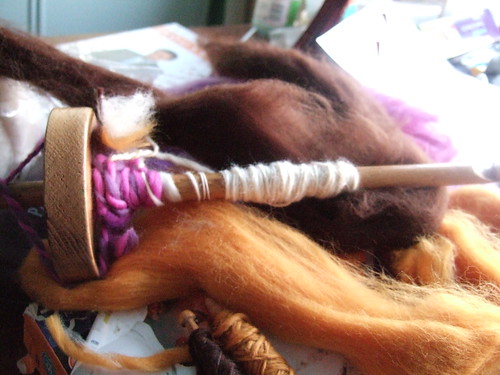
Needless to say it ended up in the back of my craft cupboard for the new few years!
Spinning remained a mystery until I found myself needing natural colours yarn to use on felted bowls and vessels based on cave paintings and to spin them from the same fibres I was using for felting seemed to be the most natural answer.
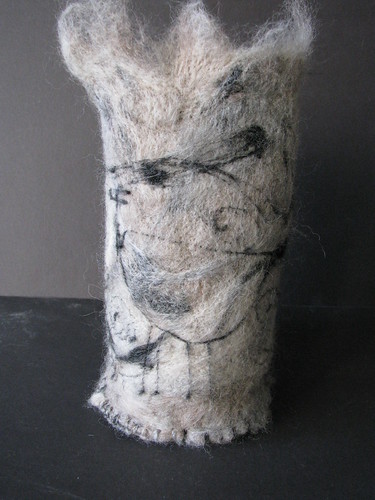
. So I improvise and spun very short lengths using Maltese lace bobbins as spindles, it sort of worked, I got very excited about it, then broke my right arm!
I was now told to keep my fingers moving as much as possible in spite of the meccano type structure holding my arm together so as I couldn't hold a needle, winding a lace bobbin was proving nearly impossible but I could flick this spindle so the experimentation began.
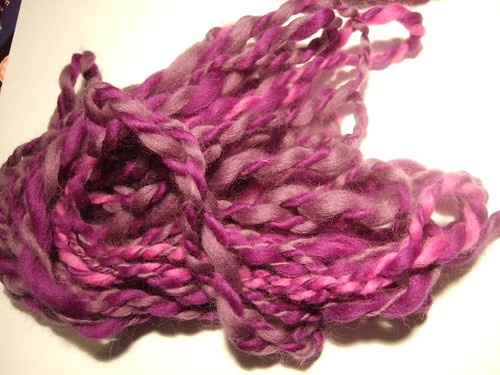
Spinning is essentially drafting the fibre ( pulling the fibres apart until you have the desired thickness) and adding twist, as the scales on the wool fibres will 'grab' each other to help stop the whole thing falling apart. Early attempts are generally thick/thin/underspun/overspun but always amazing as YOU MADE IT! Practise helps and experimentation is fun.

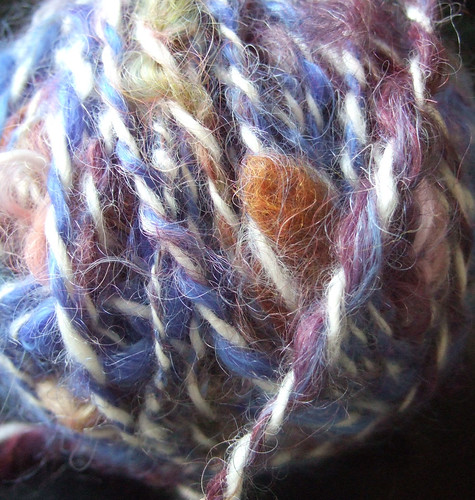
I now have favourite spindles that travel with me around the country.
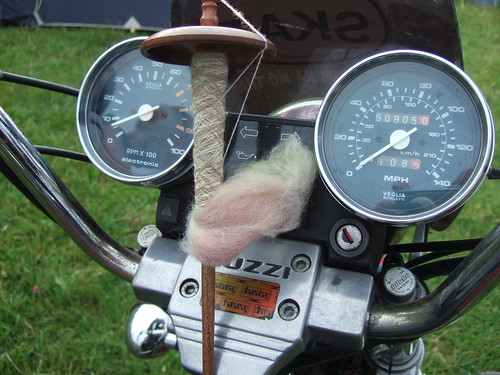
One of the most surprising outcomes from spinning has been the social side, more about that next time but just in case you wondered what Pete meant by spinning in cafes (see previous post), here's a taster.
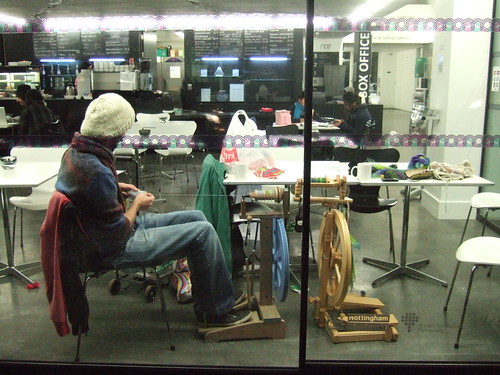
If you want to find out more about spindle spinning, just ask Pete or myself ( you can find us through the shop) . If you want to find out a little about wheel spinning, stay tuned to this blog.
Guzzisue

Fascinating stuff, is there a book you can recommend so I can teach myself (or do you do day-time mid-week lessons in the shop?)
ReplyDeleteHi Sue,
ReplyDeleteI'll text our Sue to ask her about books for recommendation - I know she has one that she loves but I can't remember the name.
As for daytime midweek lessons, I'm afraid there's too little space in the shop for a full blown lesson but I'm more than happy to spend an hour or so showing you the basics and getting you started. I can't say I'm as good as Sue but I've taught a fair few people now and Sue has a job in the big City which precludes lessons at those times...
Hope that's okay for you,
Eleanor. :)
Hi Sue, two books that I have found useful are Spin it by Lee Raven and Respect the Spindle by Abby Franquemont. Also check out abby on youtube as should has made some very good video guides to spindle spinning.
ReplyDeletehttp://www.youtube.com/user/afranquemont?feature=chclk
Many thanks for the information!
ReplyDelete